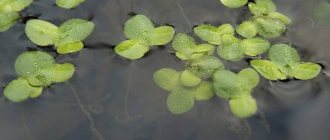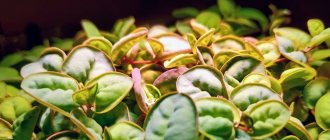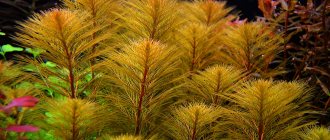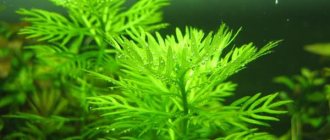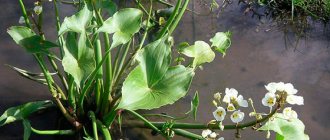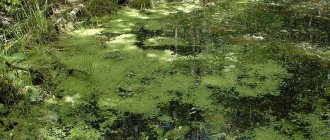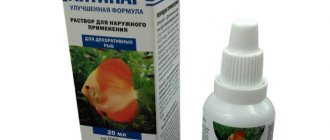Duckweed is a perennial plant that belongs to the araceae family. It has synonymous names such as frog sack and bayruta and is a tiny floating species that is notable for being one of the smallest algae blooms in the world.
It can be found in almost every type of aquatic environment. In swamps and ponds, where the water is almost completely still, duckweed can quickly fill the entire surface. Allowing the surface of the water to become completely submerged will result in a lack of oxygen and the death of large fish.
Botanical description of the plant
— Advertising —
Green duckweed consists of tiny light green round leaves floating on the surface of the water, no more than 0.2-0.3 centimeters long. A single root, called a tape measure, hangs below each leaf body. The roots often touch each other, forming a dense mat. In summer, tiny, barely noticeable oval-shaped flowers appear in the bags. Each flower produces a fruit, and each fruit produces one to three seeds.
| Domain (Regio) | Eukaryotes _ |
| Kingdom (Regnum) | Plants (Plantae) |
| Type (Phylum) (division) | Flowering plants (Angiospermae) |
| Class (Сlassis) | Monocots (Liliopsida) |
| Squad (Ordo) (order) | Alismatales _ |
| Family _ | Aroids (Araceae) |
| Genus _ | Duckweed (Lemna) |
Plant structure
The plant is not divided into stems and leaves, but forms flat, shiny and green discs - the body. It produces a small root. The tiny flowers (male and female) consist of two stamens and one fruit leaf.
What kind of plant is this, what does duckweed look like and where does it grow?
Duckweed is an aquatic plant that lives in stagnant bodies of water. It is often used as feed for ducks. For this reason, it was nicknamed duck grass. Duckweed belongs to the family Araceae and the genus Flowering monocots. It lives in places with temperate and tropical climates, but only in fresh water bodies. You can find the plant almost everywhere except the Far North.
A description of duckweed will help you imagine what it looks like. The root system of the plant is poorly developed. It functions as an anchor that holds the plates on the water surface. The flattened long stem of duck grass is called a leaf. The diameter of the leaf-shaped body is 0.5-1 cm. The flowering process occurs extremely rarely. Flowers do not have petals or sepals.
The duckweed plant, the photo of which is shown below, reproduces by budding. The flowering process occurs from May to September. The fruiting period of the plant is July-August. The fruits reach 1 mm in width and have wing-shaped edges. Subsequently, seeds appear from them.
Due to its ability to absorb heavy metals, in some countries the plant is used to purify industrial waters.
Attention! The nutritional value of duck grass leaves is not inferior to cereals.
How to remove duckweed from a pond?
The bayruta mass can increase in size every two or three days under optimal conditions during the summer. This leads to darkening of the underwater flora of your pond.
Cane can be introduced into garden pools unknowingly, brought with recently acquired aquatic plants. Therefore, it is good practice to quarantine purchases for several weeks before introducing them. The algae can also be carried on the feet of waterfowl.
Complete control is not possible. Growth must be controlled before it becomes too widespread. To do this, try the following measures:
- On smaller bodies of water, a rotating rake or net will keep the sacks under control.
- Install stop boards at upstream entrances to prevent duckweed from entering ponds or lakes.
- Algae-eating birds such as domestic and ornamental ducks, moorhens and coops will provide some degree of control of the species.
- Grass carp will also feed on sackwood.
- Shading reduces duckweed growth. This is achieved by planting on the south side of the pond. Water lilies and other plants with floating leaves can also significantly reduce duckweed levels.
Types of duckweed
There are more than 10 varieties of plants in nature. Classification is carried out according to habitat and external features. Each type has a specific range of uses and contraindications.
Humpback duckweed
A distinctive feature of the species is its rapid reproduction rate. The stems of the plant contain a rich supply of fiber. This allows it to be used as feed for fish, geese and pigs. The propagation process of humpback duck grass is carried out by daughter shoots formed from the side pockets.
The maximum leaf blade diameter of humpback duck grass is 8mm
Rootless duck grass
Rootless duckweed is considered the most common. She even lives in the Moscow River. The plant is distinguished by its tiny plate size and unpretentiousness. It is very difficult to see it on the surface of the water surface. This type of plant can survive temperatures of at least 10-12°C.
Rootless duckweed has lost typical plant organs during evolution.
Lesser duckweed (swamp)
Swamp duckweed is used more often than other species for medicinal purposes. People also call it “frog sack.” It has pronounced antispasmodic, antimicrobial and hemostatic properties. It is often used to heal snake bites, treat rheumatism and various inflammations. In addition, fresh small duckweed can be used for food.
The medicinal properties and contraindications of duckweed are a must for all supporters of alternative therapy. It is beneficial only when consumed in moderation, in accordance with the recommended dosage regimen.
A small variety of the plant can be found in dietary supplements
Trilobed duckweed
The leaves of the three-lobed duck grass grow in small groups of 3-7 pieces. It is often used to decorate an aquarium. It is considered an excellent substrate for fish spawning. A distinctive feature of the three-lobed duck grass is that it is located not on the surface, but in the water column. The plates rise to the top only during the flowering period.
The plant loves good lighting
Common polyroot
Unlike other varieties of duck grass, several thread-like stems emerge from the plates of polyroot grass. On the back side of the plate, the plants are distinguished by a purple color. Their diameter can reach 6 mm.
Polyroot is more common in Siberia and Kamchatka
Structure and reproduction
Looking at the smooth green surface of a pond covered with duckweed, it is difficult to imagine that these tiny plants belong to the same family as monstera, whitewing, edible taro or the giant amorphophallus titanica. But the significance of inconspicuous leaves in nature is no less important than vines, lush flowers and mighty trees.
The morphological structure of the plant itself is of interest. It is extremely simplified - there are no leaves, the stem is transformed into a plate (leaf), and one or more roots immediately extend from the node on the back side. Several lateral lamellar shoots develop in the recesses of the leaf. They “bud off” to form a new plant.
Often the “babies” are tightly intertwined with each other, forming a continuous “carpet”, “garlands” or balls. This is how duckweed reproduces. Inside the tissues on the surface of the leaf body there are voids filled with air. Thanks to them, the plant floats on the surface.
Duckweed blooms very rarely. The flowers, like all aroids, are inconspicuous and small. Inflorescences of 2 male and 1 female flowers develop in leaf pockets. Flowers have an extremely simplified appearance - only the reproductive parts: pistil and stamens. There is only one leaf-like appendage, like a calla lily or calla lily.
The flowering of duckweed is so rare that botanists specifically record and describe it. In science, duckweed is important as an object of study for botanists and geneticists, since in one body of water all duckweed plants, as a rule, are “clones” of the mother plant. After fertilization, an ovary with 2-7 ovules is formed in the pockets. The seeds are found in the fruits, which also float on the surface of the water.
When, during the cold period, the green part of the duckweed, along with the air cavities, dies, the dormant buds sink to the bottom of the reservoir, where they wait out the frosts.
In air and without water, duckweed can survive for up to 22 hours.
It is thanks to this vitality that duckweed has populated such vast spaces. It was carried by waterfowl, livestock and people on their shoes.
Chemical composition of duckweed grass
The health benefits and harms of duckweed are due to its rich composition. The plant has many beneficial properties and low toxicity. Due to this, it is widely used in traditional Chinese medicine. In terms of protein content, it can compete with legumes. Another feature of duck grass is its rich supply of iodine. It is often used to treat diseases of the cardiovascular system. The chemical composition of duckweed is represented by the following elements:
- cellulose;
- carotenoids;
- minerals (cobalt, copper, zinc, magnesium, iodine, titanium, calcium and phosphorus);
- flavonoids;
- phospholipids;
- protein;
- vitamins of groups PP, E and C;
- tannins;
- fatty acid;
- polysaccharides.
We recommend reading: Medicinal properties of tamarisk (tamarix) and contraindications
Fertilizer use
Fertilizers are not specifically used for this vigorously growing plant. Unless other representatives of the flora of your aquarium require additional feeding. Duckweed feels great without additional stimulants and pleases the owner with rapid growth.
Duckweed is the most unpretentious aquarium plant that does not require special conditions for full growth and reproduction. Even a beginner can handle caring for this representative of the flora. When choosing plants, you should take into account the undeniable benefits of duckweed, not only as part of the design, but also as a quality water purifier, a nutrient medium and shelter for fish.
Absorbing excess minerals and enriching the water with oxygen, the plant does not require additional filters or compressors, performing their functions perfectly. And with intensive reproduction it is easily controlled with regular pruning.
Medicinal properties of duckweed
Duck grass is widely used in alternative medicine. It became popular back in ancient times. The greatest effectiveness was observed against hemorrhoids. When exposed locally, duckweed can cope with inflammation and herpes.
Thanks to experimental studies, the antimycotic and antibacterial properties of the plant were officially confirmed. In addition, it is often used as a diuretic. Useful properties of duckweed:
- antipyretic effect;
- diuretic effect;
- elimination of thyroid pathologies;
- antifever effect;
- treatment of skin diseases;
- removal of puffiness;
- pain relief;
- anti-cold effect;
- stabilization of emotional state;
- antiparasitic effect.
The abundance of medicinal properties of river duckweed makes it an invaluable means of alternative medicine. In severe cases of the disease, it is used to increase the effectiveness of basic therapy. In the initial stages of the disease, it can act as an independent remedy. Indications for use of duckweed:
- glaucoma;
- psoriasis;
- rheumatism;
- vitiligo;
- diseases of the urinary system;
- upper respiratory tract diseases;
- hepatitis;
- swelling;
- impotence;
- malignant formations;
- pathology of the thyroid gland.
Important! In case of increased nervous excitability, using the plant for medicinal purposes is strictly prohibited.
The use of duckweed in folk medicine
Due to its healing properties, duckweed is often used in folk medicine. It is used to prepare decoctions, alcoholic infusions, ointments and decoctions. Therapeutic agents have anti-inflammatory and immunostimulating activity. They can be used to achieve diuretic and choleretic effects. Among other things, duck grass strengthens the immune system, allowing the body to independently cope with various diseases.
Decoctions
Components:
- 250 ml water;
- 1 tbsp. l. dry duckweed.
Recipe:
- The raw materials are poured into a deep container and filled with water.
- The drink is infused for 5 minutes.
- The finished broth is filtered and taken ½ tbsp. before meals. Reception is carried out 3 times a day.
The plant can also be used fresh to prepare a decoction.
Infusions
Honey infusion from duck grass is used to treat skin diseases. It is effective against vitiligo and psoriasis. Internal administration of duckweed infusion is practiced in order to strengthen the immune system.
Ingredients:
- 250 g honey;
- freshly harvested duckweed.
Recipe:
- Juice in a volume of 250 ml survives from the plant. For these purposes, you can use a blender.
- The components are placed in a deep container and mixed until a homogeneous consistency is obtained.
- The medicine is infused for a week.
- Take 1 tsp. 3 times a day.
You can use any type of honey to prepare the infusion.
Tinctures
The use of duckweed alcohol tincture is often practiced to treat diseases of the upper respiratory tract. When applied locally, it is effective against rheumatism and neurodermatitis.
Components:
- 200 ml vodka;
- 1 tbsp. l. crushed grass root.
Recipe:
- Dried duckweed is poured into a glass bottle and filled with vodka. It is advisable that the container be made of dark glass.
- The tincture is kept in a dark place for a week. After the specified time, it is filtered.
- The medicine is taken 15-20 drops, diluted in ¼ tbsp. water. Take half an hour before meals 3 times a day.
If it is not possible to prepare the tincture yourself, you can use a pharmacy
Ointments
Components:
- 50 g butter;
- 350 g dried duckweed.
Recipe:
- Duck grass leaves are ground into a smooth powder using a blender.
- Add butter to the resulting mixture.
- The ointment should be stored in a cool place. It is used to make turundas for the nose and ears.
Duck grass powder has the characteristic smell of stagnant water
Advice! Before carrying out herbal medicine using duckweed, you should consult your doctor.
Honey balls
Duckweed is also good for children. It is used to treat anemia and colds. To improve the taste, honey is added to the medicine. For psoriasis, treatment with honey balls can last 6 months.
We recommend reading: Rhodiola rosea: medicinal properties for women and men
Ingredients:
- 200 g honey;
- 200 g dried duckweed.
Cooking steps:
- An infusion is prepared from duck grass. The raw materials are poured with 250 ml of hot water and kept under the lid for 15 minutes.
- The strained and cooled drink is mixed with honey.
- Balls are formed from the resulting mass. They are placed in the refrigerator to harden.
It is not recommended to use the balls as a dessert
You are allowed to eat no more than 3 balls daily. After completing the treatment course, you need to take a break of 2 months. If you are allergic to bee products, it is prohibited to take them.
Fast growth rate and high productivity
According to studies by Culley and colleagues (1981) and Landolt and Kandeler (1987, pp. 371-373), duckweed species have unusually high productivity. Dry mass under normal conditions increases by 10-20 tons/ha/year. Typically, the biomass doubling time is 24 hours. Per week, for every gram of dry mass of the plant, 64 g are formed, i.e. 73 tons/ha/year (Landolt and Kandeler, 1987, p. 371). As Landolt and Kandeler noted, the actual values were 1/3 - 2/3 of the theoretical ones. In Louisiana summer conditions, high fertilizer concentrations resulted in productivity of 44 tons/ha/year (Said et al. 1979).
Needless to say, this value will be lower in cold temperate climates and low fertilization conditions. However, the reproduction rate of duckweed is closer to that of microorganisms than of higher plants.
High productivity requires large amounts of fertilizer, which can become a limiting factor. However, everything becomes easier if the source of nitrogen-containing fertilizers is feedlot waste.
| Daily increase in plant biomass per hectare | ||||||
| Fertilizer | 500 kg | 600 kg | 700 kg | 800 kg | 900 kg | 1,000 kg |
| Urea | 10.00 | 12.00 | 14.00 | 16.00 | 18.00 | 20.00 |
| Ca3(PO4)2 | 2.00 | 2.40 | 2.80 | 3.20 | 3.60 | 4.00 |
| Potassium chloride | 2.00 | 2.40 | 2.80 | 3.20 | 3.60 | 4.00 |
| Unrefined sea salt | 4.50 | 5.40 | 6.30 | 7.20 | 8.10 | 9.00 |
Table. Daily fertilizer application rate (kg/ha) (more infohouse.p2ric.org/ref/09/08875.htm).
Contraindications
Before using duckweed for medicinal purposes, you should read its full instructions. Particular attention should be paid to the list of contraindications. These include:
- autonomic dysfunction;
- individual intolerance;
- pregnancy and breastfeeding;
- nervous breakdowns.
Instructions for use of duckweed herb indicate a high risk of side effects in case of overdose. In most cases, nausea and headache develop against this background. Sometimes skin rashes appear, accompanied by itching.
Causes of plant development disorders
The main reason that can disrupt the development, slow down growth, and lead to decay and death of duckweed is non-compliance with the rules of care, violation of temperature and light conditions. These indicators directly affect the full existence of algae.
Thus, duckweed is considered the most unpretentious among aquarium plants; its rotting or death can only be achieved intentionally. In other cases, you just need to change the water in the tank on time and provide a light source. This plant is so capable of self-regulation and regeneration that it will adapt to any living conditions.
Growing duckweed in an aquarium
Many fish breeders raise aquarium duckweed. It is easy to care for and very useful for the inhabitants of the aquarium. The main value is to stimulate oxygen production. In addition, duck grass copes well with nitrates and nitrites. Most often, the aquarium is populated with the humpback variety of the plant.
Before adding duckweed to an aquarium, you need to understand whether it brings benefit or harm. Its disadvantages include rapid growth. Because of this, the fish do not receive the required amount of light. But this can be corrected by directing the plant’s growth in the right direction. To do this, a special fishing line is placed in the aquarium.
Aquarium duckweed has many more advantages:
- there is no need to select lighting and carbon dioxide supply;
- implementation of demineralization of space;
- release of oxygen during photosynthesis;
- saturation of water with iodine and bromine salts;
- Labyrinth fish use duckweed to build nests.
The only conditions for growing a plant are maintaining the temperature in the range of 12-30 °C. Duck grass will be an excellent decoration for an aquarium with goldfish or angelfish. It can serve as food for them. When the need for duckweed disappears, it is simply caught from the aquarium using a net.
Mr. Tail recommends: varieties
Duckweed is a small aquarium plant. It has about 10 varieties, differing in the nature of foliage, reproductive period, number and shape of roots. Here are the main ones that grow in aquariums:
- Humpback (Lemna gibba). Most often used in aquarium farming. Shiny and convex leaves (5-7 mm). Growing too fast.
- Small or marsh (Lemna minor). The most common in nature. Oval leaf (3-4.5 mm) salad color.
- Trilobed (Lemna trisulca). A rarer species. The leaf is 1 cm. On the plane of the reservoir it can be observed during the flowering period, after which it descends into the middle layers, where it remains all the time.
- Multi-rooted (Lemna polyrhiza). Each plate has many roots. Round leaf (6 mm), colored purple at the bottom.
Collection and preparation of grass
When using duckweed in medicine, any part of the plant will do. For collection, it is advisable to give preference to ecologically clean areas. The procedure is carried out in the summer. Collection is carried out with a net. Yellowed plates should be disposed of as they contain toxic substances. The collected grass is immediately laid out on the surface of a clean cloth. In this form, it is dried naturally, protecting it from direct exposure to the sun. It is advisable to form a canopy over the duckweed. It is also permissible to dry in a ventilated area. Raw materials can be removed when they begin to break down.
Dried duck grass should be stored in a glass container with a lid. You can also use a paper bag or canvas bag for storage. The shelf life of the harvested plant is 1 year. For storage, you need to choose a place protected from light and moisture. Otherwise, the duckweed will become moldy or lose its beneficial properties.
Comment! Duck grass is found almost everywhere except the Arctic.
Care instructions
Basic criteria for normal duckweed growth:
- temperature;
- lighting;
- regular care.
The main criterion for development, growth and attractive appearance is lighting. Duckweed loves bright, long-term (at least 12 hours a day) lighting.
The more light the plant receives, the more intense the process of photosynthesis occurs, making it possible to naturally enrich the aquarium water with oxygen and cleanse the environment of organic waste.
It should be borne in mind that this indicator has the opposite effect: if the duckweed grows strongly, absorbing other plantings, it is enough to turn off the lighting for 3-4 days or replace the overhead light with a side light. This stops the growth and vital processes of the plant. Under such conditions it dies.
The temperature regime is set depending on the requirements of keeping the fish. The only requirement: there should not be strong frequent temperature changes.
Regular maintenance means changing the water in the aquarium according to plan, since if there is a lot of contamination, the plant will not have time to cope with the cleaning functions. Organic waste, settling on the leaves, can lead to rotting and, as a result, death of duckweed.
